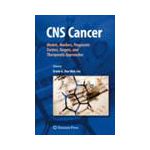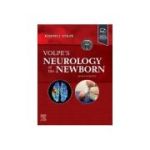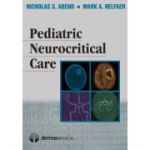CNS Cancer; Models, Markers, Prognostic Factors, Targets, and Therapeutic Approaches

Preț: 525,00 lei
Disponibilitate: în stoc la furnizor
Autor: Van Meir, Erwin G. (Ed.)
ISBN: 978-1-60327-552-1
Editura: Springer Nature
Anul publicarii: 2009
Ediția: 1
Pagini: 760
Categoria: NEUROLOGY
DESCRIERE
CNS Cancer: Models, Markers, Prognostic Factors and Therapeutic Approaches
Erwin G. Van Meir
Cancers of the central nervous system are among the most lethal of human neoplasms. They are recalcitrant to even intensive multimodality therapies that include surgery, radiotherapy and chemotherapy. Moreover, especially in children, the consequences of these therapies can itself be devastating and involve serious cognitive and developmental disorders. It is small wonder that such cancers have come under the intense scrutiny of each of the subspecialties of clinical care and investigation as well as attracting some of the best basic research scientists. Their joint efforts are gradually peeling away the mysteries surrounding the genesis and progression of these tumors and inroads are being steadily made into understanding why they resist therapies.This makes it an especially opportune time to assemble some of the best investigators in the field to review the "state of the art" in the various arenas that comprise the assault on CNS tumors. While the lethality of these tumors has remained dismal over the past decades, there is finally real reason for optimism as our knowledge base grows exponentially larger.
The major areas of this endeavor are displayed in CNS Cancer: Models, Markers, Prognostic Factors and Therapeutic Approaches. Each of the chapters in the book represents illustrative examples of the road from discovery through translation to clinical importance, although many begin the journey at different parts of this continuum. This includes several chapters on incredibly clever mouse models for deciphering the genetic wiring underlying the development of CNS tumors and how that wiring might be targeted for therapeutic benefit. A great deal of attention has been paid in the book to the development of genetic prognostic factors and biomarkers that could be used for assessing individual responses to therapies and so could lead to truly personalized medicine. Other possible prognostic factors/biomarkers that arise from an understanding of CNS tumor pathophysiology are discussed in some detail and include tumor vascularization and hypoxia. Several of the new and rapidly developing methodologies that allow these rapid advances are detailed for the reader as well and include RNA expression profiling, proteomic analyses of both tumors and biological fluids as well as profiling small non-coding RNAs and DNA modification. Finally, several chapters explore aspects of therapeutic targeting employing small molecules and combinations thereof, various sorts of cells, viruses and immune modulation. In sum, these treatises represent the cutting edge of research that is driven to be of benefit to patients with these dreaded diseases.
Erwin G. Van Meir is Professor of Neurosurgery and Hematology & Medical Oncology in the School of Medicine at Emory University. A native of Belgium, he obtained Bachelor’s degrees in Biology and Education at the University of Fribourg, Switzerland. Dr Van Meir is an active member of the International Neuro-Oncology community and served on the Board of Directors of the Society for Neuro-Oncology from 2004-2008. Dr. Van Meir currently serves on the Editorial Board of Neuro-Oncology, Frontiers in Bioscience, and International Journal of Oncology and is a former Associate Editor of the International Journal of Cancer. He has served as a reviewer for over 30 international scientific journals and for grant proposals from public and private agencies.
Table of contents
Chapter 1: PDGF-Based Malignant Glioma Model in Rats and Mice.- Chapter 2: Modeling Brain Tumors Using Avian Retroviral Gene Transfer.- Chapter 3: Using Neurofibromatosis Type 1 Mouse Models to Understand Human Pediatric Low-Grade Gliomas.- Chapter 4: Transgenic Mouse Models of CNS Tumors: Using Genetically Engineered Murine Models to Study the Role p21-Ras in Glioblastoma Multiforme.- Chapter 5: Pten-Deficient Mouse Models for High-Grade Astrocytomas.- Chapter 6: The NF1/p53 Knockout Transgenic Model for Malignant Glioma.- Chapter 7: Conditional Models for Brain Tumors in Transgenic Mice.- Chapter 8: Human Brain Tumor Cell and Tumor Tissue Transplantation Models.- Chapter 9: Transformation of Human Brain Cells in Culture as Models for Brain Tumors.- Chapter 10: History of Important Carcinogen-Induced Brain Tumor Cell Lines.- Chapter 11: Neuro-Oncogenesis Induced by Nitroso-Compounds in Rodents and Strain-Specific Genetic Modifiers of Predisposition.- Chapter 12: The Murine GL261 Glioma Experimental Model to Assess Novel Brain Tumor Treatments.- Chapter 13: Spontaneous Occurrence of Brain Tumors in Animals: Opportunities as Preclinical Model Systems.- Chapter 14: P53 Alterations in Brain Tumors.- Chapter 15: The PTEN/PI3 Kinase Pathway in Human Glioma.- Chapter 16: Value of 1p/19q and Other LOH Markers for Brain Tumor Diagnosis, Prognosis and Therapy.- Chapter 17: Discovery of Genetic Markers for Brain Tumors by Comparative Genomic Hybridization.- Chapter 18: Genomic Identification of Significant Targets in Brain Cancer.- Chapter 19: Oncogenic Pathway Markers.- Chapter 20: Aberrant EGFR Signaling in Glioma.- Chapter 21: Mechanisms of Brain Tumor Angiogenesis.- Chapter 22: Vaso-Occlusive Mechanisms that Intiate Hypoxia and Necrosis in Glioblastoma: The Role of Thrombosis and Tissue Factor.- Chapter 23: Expression Profiling of Glioblastoma Defines Distinct Subtypes.- Chapter 24: Proteomic Profiling of Human Brain Tumors.- Chapter 25: Discovery of Biomarkers in the Cerebrospinal Fluid of Brain Tumor Patients.- Chapter 26: Epigenetic Profiling of Gliomas.- Chapter 27: Micro RNAs in the Central Nervous System and Potential Roles of RNA Interference in Brain Tumors.- Chapter 28: Understanding Glioma Resistance to Temozolomide Therapy.- Chapter 29: Markers of Cancer Stem Cells for Brain Tumor Prognosis.- Chapter 30: Clinical Agents for the Targeting of Brain Tumor Vasculature.- Chapter 31: GBM Neovascularization: Impact of Bone Marrow-Derived Cells and Evasive Mechanisms of Antiangiogenic Therapy.- Chapter 32: Novel Phage and Viral Targeting Vehicles for Brain Tumor Therapy.- Chapter 33: Impact of the Blood Brain Barrier on Brain Tumor Imaging and Therapy.- Chapter 34: Targeting CXCR4 in Brain Tumors.- Chapter 35: Molecular Targeting of IL-13Ra2 and EphA2 Receptor in GBM.- Chapter 36: Brain Tumor Targets for Antibody-Mediated Immuno-Therapy.- Chapter 37: STAT3 Oncogenic Signaling in Brain Tumors.- Chapter 38: Inhibition of Ras Signaling in Brain Tumors.- Chapter 39: HGF/c-Met Signaling and Targeted Therapeutics in Brain Tumors.- Chapter 40: Combinatorial Therapeutic Strategy for Blocking Kinase Pathways in Brain Tumors.- Chapter 41: Targeting of TRAIL Apoptotic Pathways for Glioblastoma Therapies.- Chapter 42: The NF-kB Signaling Pathway in GBMs, Implications for Apoptotic and Inflammatory Responses and Exploitation for Therapy.- Chapter 43: Targeting Endoplasmic Reticulum Stress for Malignant Glioma Therapy.- Chapter 44: Targeting Adult and Pediatric Brain Cancer Stem Cells.- Chapter 45: The Use of Retinoids as Differentiation Agents Against Medulloblastoma.- Chapter 46: Herpes Simplex Virus 1 (HSV-1) for Glioblastoma Multiforme Therapy.- Chapter 47: The Development of Targeted Cancer Gene-Therapy Adenoviruses for High-Grade Glioma Treatment.- Chapter 48: Harnessing T-cell Immunity to Target Brain Tumors.- Chapter 49: Glioma Invasion: Mechanisms and Therapeutic Challenges.-
Erwin G. Van Meir
Cancers of the central nervous system are among the most lethal of human neoplasms. They are recalcitrant to even intensive multimodality therapies that include surgery, radiotherapy and chemotherapy. Moreover, especially in children, the consequences of these therapies can itself be devastating and involve serious cognitive and developmental disorders. It is small wonder that such cancers have come under the intense scrutiny of each of the subspecialties of clinical care and investigation as well as attracting some of the best basic research scientists. Their joint efforts are gradually peeling away the mysteries surrounding the genesis and progression of these tumors and inroads are being steadily made into understanding why they resist therapies.This makes it an especially opportune time to assemble some of the best investigators in the field to review the "state of the art" in the various arenas that comprise the assault on CNS tumors. While the lethality of these tumors has remained dismal over the past decades, there is finally real reason for optimism as our knowledge base grows exponentially larger.
The major areas of this endeavor are displayed in CNS Cancer: Models, Markers, Prognostic Factors and Therapeutic Approaches. Each of the chapters in the book represents illustrative examples of the road from discovery through translation to clinical importance, although many begin the journey at different parts of this continuum. This includes several chapters on incredibly clever mouse models for deciphering the genetic wiring underlying the development of CNS tumors and how that wiring might be targeted for therapeutic benefit. A great deal of attention has been paid in the book to the development of genetic prognostic factors and biomarkers that could be used for assessing individual responses to therapies and so could lead to truly personalized medicine. Other possible prognostic factors/biomarkers that arise from an understanding of CNS tumor pathophysiology are discussed in some detail and include tumor vascularization and hypoxia. Several of the new and rapidly developing methodologies that allow these rapid advances are detailed for the reader as well and include RNA expression profiling, proteomic analyses of both tumors and biological fluids as well as profiling small non-coding RNAs and DNA modification. Finally, several chapters explore aspects of therapeutic targeting employing small molecules and combinations thereof, various sorts of cells, viruses and immune modulation. In sum, these treatises represent the cutting edge of research that is driven to be of benefit to patients with these dreaded diseases.
Erwin G. Van Meir is Professor of Neurosurgery and Hematology & Medical Oncology in the School of Medicine at Emory University. A native of Belgium, he obtained Bachelor’s degrees in Biology and Education at the University of Fribourg, Switzerland. Dr Van Meir is an active member of the International Neuro-Oncology community and served on the Board of Directors of the Society for Neuro-Oncology from 2004-2008. Dr. Van Meir currently serves on the Editorial Board of Neuro-Oncology, Frontiers in Bioscience, and International Journal of Oncology and is a former Associate Editor of the International Journal of Cancer. He has served as a reviewer for over 30 international scientific journals and for grant proposals from public and private agencies.
Table of contents
Chapter 1: PDGF-Based Malignant Glioma Model in Rats and Mice.- Chapter 2: Modeling Brain Tumors Using Avian Retroviral Gene Transfer.- Chapter 3: Using Neurofibromatosis Type 1 Mouse Models to Understand Human Pediatric Low-Grade Gliomas.- Chapter 4: Transgenic Mouse Models of CNS Tumors: Using Genetically Engineered Murine Models to Study the Role p21-Ras in Glioblastoma Multiforme.- Chapter 5: Pten-Deficient Mouse Models for High-Grade Astrocytomas.- Chapter 6: The NF1/p53 Knockout Transgenic Model for Malignant Glioma.- Chapter 7: Conditional Models for Brain Tumors in Transgenic Mice.- Chapter 8: Human Brain Tumor Cell and Tumor Tissue Transplantation Models.- Chapter 9: Transformation of Human Brain Cells in Culture as Models for Brain Tumors.- Chapter 10: History of Important Carcinogen-Induced Brain Tumor Cell Lines.- Chapter 11: Neuro-Oncogenesis Induced by Nitroso-Compounds in Rodents and Strain-Specific Genetic Modifiers of Predisposition.- Chapter 12: The Murine GL261 Glioma Experimental Model to Assess Novel Brain Tumor Treatments.- Chapter 13: Spontaneous Occurrence of Brain Tumors in Animals: Opportunities as Preclinical Model Systems.- Chapter 14: P53 Alterations in Brain Tumors.- Chapter 15: The PTEN/PI3 Kinase Pathway in Human Glioma.- Chapter 16: Value of 1p/19q and Other LOH Markers for Brain Tumor Diagnosis, Prognosis and Therapy.- Chapter 17: Discovery of Genetic Markers for Brain Tumors by Comparative Genomic Hybridization.- Chapter 18: Genomic Identification of Significant Targets in Brain Cancer.- Chapter 19: Oncogenic Pathway Markers.- Chapter 20: Aberrant EGFR Signaling in Glioma.- Chapter 21: Mechanisms of Brain Tumor Angiogenesis.- Chapter 22: Vaso-Occlusive Mechanisms that Intiate Hypoxia and Necrosis in Glioblastoma: The Role of Thrombosis and Tissue Factor.- Chapter 23: Expression Profiling of Glioblastoma Defines Distinct Subtypes.- Chapter 24: Proteomic Profiling of Human Brain Tumors.- Chapter 25: Discovery of Biomarkers in the Cerebrospinal Fluid of Brain Tumor Patients.- Chapter 26: Epigenetic Profiling of Gliomas.- Chapter 27: Micro RNAs in the Central Nervous System and Potential Roles of RNA Interference in Brain Tumors.- Chapter 28: Understanding Glioma Resistance to Temozolomide Therapy.- Chapter 29: Markers of Cancer Stem Cells for Brain Tumor Prognosis.- Chapter 30: Clinical Agents for the Targeting of Brain Tumor Vasculature.- Chapter 31: GBM Neovascularization: Impact of Bone Marrow-Derived Cells and Evasive Mechanisms of Antiangiogenic Therapy.- Chapter 32: Novel Phage and Viral Targeting Vehicles for Brain Tumor Therapy.- Chapter 33: Impact of the Blood Brain Barrier on Brain Tumor Imaging and Therapy.- Chapter 34: Targeting CXCR4 in Brain Tumors.- Chapter 35: Molecular Targeting of IL-13Ra2 and EphA2 Receptor in GBM.- Chapter 36: Brain Tumor Targets for Antibody-Mediated Immuno-Therapy.- Chapter 37: STAT3 Oncogenic Signaling in Brain Tumors.- Chapter 38: Inhibition of Ras Signaling in Brain Tumors.- Chapter 39: HGF/c-Met Signaling and Targeted Therapeutics in Brain Tumors.- Chapter 40: Combinatorial Therapeutic Strategy for Blocking Kinase Pathways in Brain Tumors.- Chapter 41: Targeting of TRAIL Apoptotic Pathways for Glioblastoma Therapies.- Chapter 42: The NF-kB Signaling Pathway in GBMs, Implications for Apoptotic and Inflammatory Responses and Exploitation for Therapy.- Chapter 43: Targeting Endoplasmic Reticulum Stress for Malignant Glioma Therapy.- Chapter 44: Targeting Adult and Pediatric Brain Cancer Stem Cells.- Chapter 45: The Use of Retinoids as Differentiation Agents Against Medulloblastoma.- Chapter 46: Herpes Simplex Virus 1 (HSV-1) for Glioblastoma Multiforme Therapy.- Chapter 47: The Development of Targeted Cancer Gene-Therapy Adenoviruses for High-Grade Glioma Treatment.- Chapter 48: Harnessing T-cell Immunity to Target Brain Tumors.- Chapter 49: Glioma Invasion: Mechanisms and Therapeutic Challenges.-
Categorii de carte
-Comandă specială
-Edituri
-Promo
-Publicaţii Callisto
-Cărţi noi
-- 463,05 leiPRP: 514,50 lei
- 604,80 leiPRP: 672,00 lei
- 916,65 leiPRP: 1018,50 lei
Promoţii
-- 463,05 leiPRP: 514,50 lei
- 604,80 leiPRP: 672,00 lei
- 189,00 leiPRP: 630,00 lei













REVIEW-URI